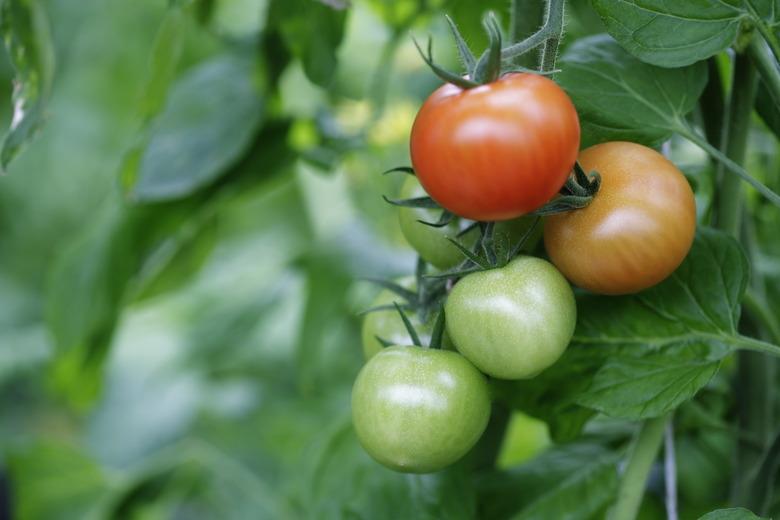Hydrogen Peroxide Mixture For Tomato Plants
A hydrogen peroxide mixture is a useful solution for anyone growing tomato plants. Plants actually create hydrogen peroxide as a response to fungus or bacteria. When sprayed on plants, typical fungi that attacks tomatoes, such as leaf spot or early blight, are covered. Oxidation then occurs, killing the fungi. Hydrogen peroxide can also kill mold.
You need to use an extremely diluted solution, or the process will damage not only the fungi or mold but also the plant's leaves. You can easily prepare a hydrogen peroxide mixture to tomato plants either by pouring it directly on the soil as the plants would normally be watered, or by using the mixture as a spray. The method of application you choose depends on the reasons for applying the mixture.
Hydrogen Peroxide Concentration
The hydrogen peroxide sold in most stores is a 3 percent concentration of hydrogen peroxide with the rest of the solution being water. Higher concentrations are sold mainly at specialty stores, but check the label before purchase to be certain it is a 3 percent concentration. This is the strength you want for the mixture. Note that the name on the label isn't always the same; sometimes it is referred to as a topical solution. A quick label check will reveal that they are in fact the same product.
Making the mixture requires diluting store-bought hydrogen peroxide with water. When preparing a mixture for misting plants to prevent infection or mildew, add 12 tablespoons or 6 ounces of hydrogen peroxide to each gallon of water, according to the Rusted Garden.
Applying to Soil
If the soil needs to be aerated or has mold, fungus or bacteria growing in it, apply the mixture directly to the soil the same way you normally water plants. The hydrogen peroxide mixture controls unwanted growths in the soil by oxidizing them on contact, killing them with no harmful side effects. Because the mixture quickly breaks down after application, it will release water and oxygen into the soil, aerating it easily and efficiently.
Spraying the Plants
When fungus or mold are growing on a tomato plant, use a spray bottle to spray the mixture directly onto the plant itself. This kills the unwanted organisms on contact, whereas the absorption of the mixture through the roots does not affect them. This also helps to fight off and prevent bacterial infections in tomato plants.
Start by testing the spray on several leaves and then waiting 48 hours to assess any possible spray damage. If everything looks good, spray the plants. When working with an entire greenhouse of tomato plants, spraying the mixture generally throughout the air can prevent mildew in the moist conditions.
The Rusted Gardener recommends a spraying schedule of three consecutive days for fungal diseases. For less serious outbreaks, spray every other day for five days. After spraying, apply a fungal preventative solution such as a sulfur-based product. Re-apply the hydrogen peroxide every seven to 14 days as needed, followed by the fungal treatment throughout the season.
